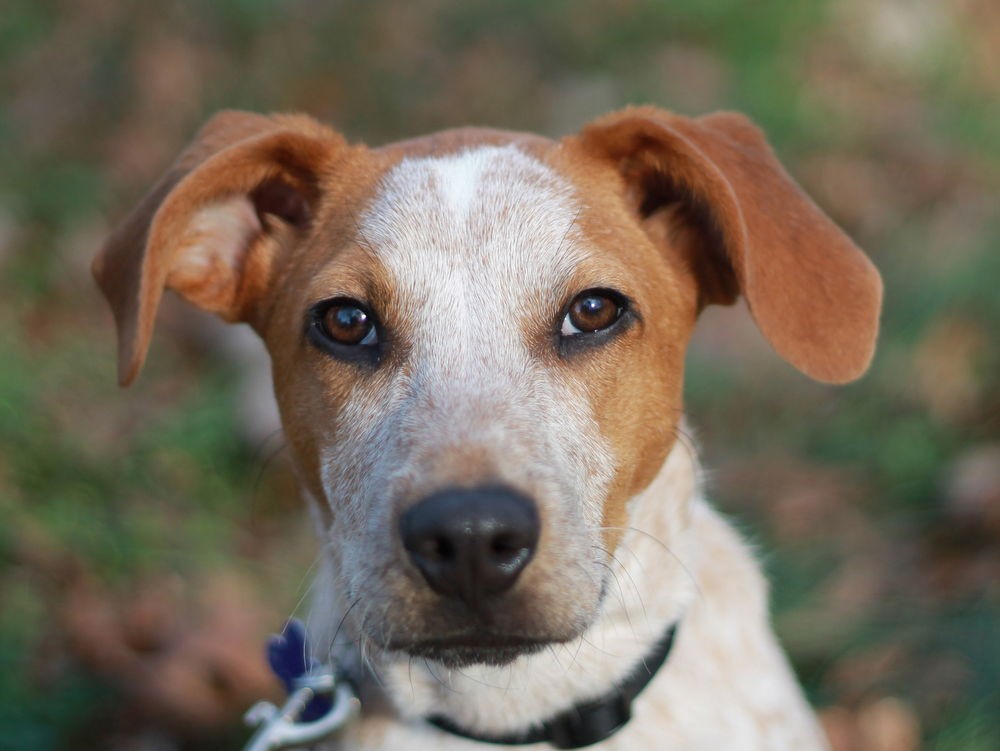
The Australian Cattle Dog Beagle mix, also known as the Beagle Cattle Dog, represents an intriguing hybrid combining the intelligence and work ethic of the Blue Heeler with the friendly, curious nature of the Beagle. This medium-sized crossbreed typically stands 14-18 inches tall and weighs between 18-28 pounds, with a life expectancy of 12-14 years. Distinguished by their thick double coat in varied colors including black, brown, blue, white and red, these dogs exhibit high energy levels and require substantial physical and mental stimulation. Their loyal, sweet-natured temperament coupled with keen intelligence makes them excellent family companions, provided they receive adequate exercise and training.
Australian Cattle Dog Beagle Mix Characteristics
Physical Features and Size Comparison
The Blue Heeler Beagle mix exhibits a unique blend of physical traits from both parent breeds. Their size ranges from 13-20 inches in height and 30-45 pounds in weight, making them a medium-sized dog. The breed typically inherits pricked ears reminiscent of the Blue Heeler parent, combined with the Beagle's overall body structure. Their coat comes in various colors including blue, brown, black, white and red, often displaying a spotted or marked pattern characteristic of the Blue Heeler lineage.
Exercise Requirements and Activity Level
This crossbreed requires significant daily exercise due to their high energy levels inherited from both working parent breeds. According to experienced owners, these dogs need 35-40 minutes of structured physical activity daily, along with mental stimulation to prevent destructive behaviors. Beyond regular walks, they benefit from:
- Exploring new environments to satisfy their curiosity
- Car rides and "field trips" to different locations
- Interactive play sessions with toys
- Training activities that challenge them mentally
Without adequate exercise and stimulation, these intelligent and energetic dogs may become problematic, displaying behaviors like excessive chewing or scratching. Their exercise needs stem from both the Blue Heeler's herding background and the Beagle's hunting instincts, making them best suited for active families who can provide consistent physical activity and engagement.
Blue Heeler & Beagle Mix Characteristics and Traits\Care Requirements and Health Considerations
Temperament and Social Behavior
The Blue Heeler Beagle mix displays a balanced personality, combining intelligence with affection. While not typically cuddly, they show their attachment through attentiveness and alertness. These dogs tend to be:
- Generally quiet and calm despite their high energy
- Affectionate with family members
- Initially shy but curious about new experiences
- Good with other pets when properly socialized
- Intelligent but occasionally stubborn during training
Health Management and Care Needs
These dogs require specific attention to maintain optimal health throughout their 13-15 year lifespan. Key health considerations include:
Common Health Issues:
- Eye conditions like cataracts and glaucoma
- Hypothyroidism, particularly in middle-aged dogs
- Skin allergies affecting ears, stomach, and tail
Essential Care Requirements:
- 2-3 daily meals of protein-rich food
- Regular cleaning of tear ducts and ear canals
- Weekly coat brushing to manage shedding
- Monthly baths to preserve natural coat oils
- Routine nail trimming and dental care
Preventive measures include regular veterinary check-ups to monitor for breed-specific conditions and maintaining proper hygiene practices. Early detection and treatment of health issues can significantly impact quality of life.
Australian Cattle Dog Beagle Mix Training and Adaptation
Early Training Requirements
While previous sections covered general care and characteristics, this section focuses specifically on early training needs. The Blue Heeler Beagle mix requires consistent training from a young age due to their intelligence and potential stubbornness. Key training considerations include:
- Early socialization to prevent shyness and fearfulness
- Basic obedience training before 6 months
- Establishing clear boundaries to manage herding instincts
- Positive reinforcement methods to overcome stubbornness
- Command training to prevent following scent trails unsafely
Home Environment Adaptation
While previous sections discussed exercise needs, this part examines specific home environment requirements. These dogs adapt well to family settings but need:
- Designated play areas for mental stimulation
- Secure fencing to prevent wandering
- Rotating toy selection to maintain engagement
- Structured daily routines for stability
- Safe spaces for occasional quiet time
The mix does well in homes with adequate space for activities but can adapt to apartment living if given sufficient outdoor exercise and mental stimulation. However, they thrive best in environments where they can have a designated role or "job" to fulfill, satisfying both the herding and hunting instincts inherited from their parent breeds.
Conclusion
The Australian Cattle Dog Beagle mix combines the best traits of both parent breeds, resulting in an intelligent, energetic, and affectionate medium-sized dog that ranges from 13-20 inches in height and 30-45 pounds in weight. These dogs require significant daily exercise (35-40 minutes minimum) and mental stimulation to prevent destructive behaviors. While generally healthy with a lifespan of 13-15 years, they may face certain health issues like eye conditions, hypothyroidism, and skin allergies that require regular veterinary monitoring.
The success of owning this mixed breed depends heavily on providing proper training, socialization, and an enriching environment that accommodates both their herding and hunting instincts. While they can adapt to apartment living with sufficient exercise, they thrive best in homes with space and structure where they can fulfill a designated role. Their balanced temperament and trainability make them excellent family dogs for active households committed to meeting their physical and mental stimulation needs through consistent training, exercise, and preventative healthcare.